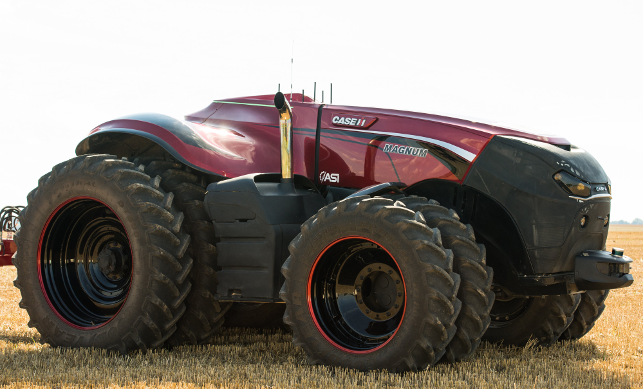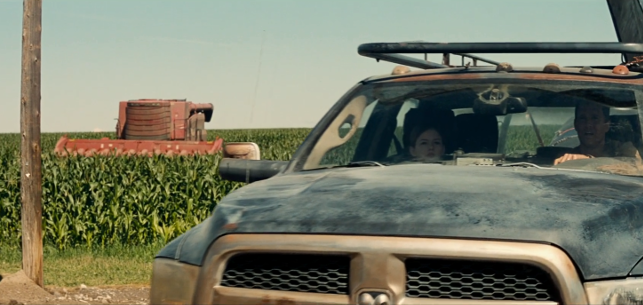While watching Interstellar for the 40th time, Al Dean starts to wonder about how the rise of autonomy in many aspects of life will start to influence design. What will happen to design once you take the human out of the equation?
I think I’ve previously talked about my love for the recent spate of high quality, less Star Wars-y science fiction movies. We’ve had The Martian (good movie, even better book), Gravity, Interstellar and, of course, Ridley Scott is back in the game with the Alien prequels.
What I find most interesting in these movies is not so much the space exploration part, but elements where they give you a version or a conceptualisation of the future.
Not one where we’re all wandering about in space, looking for aliens, but where things have got so bad on earth that we need to colonise other planets and push out further.
Interstellar is perhaps my personal favourite — particularly the first hour or so before McConaughey and Anne Hathaway don space suits.

Cooper and Murph head back to the farm, tailed by an autonomous harvester in Interstellar (courtesy of Paramount Pictures)
It’s that section of the movie where they hijack a drone to break it down for spare parts, and autonomous combine harvesters have gone a little haywire. The sequence where these hacked together beasts come back to the farm due to a magnetic field change (I’m trying to avoid spoilers in case you’ve not seen it).
Those farm vehicles aren’t manned; they’re set to do their work without human intervention or control. In the movie, they’re clearly hacked together using existing farm equipment — but I found the aesthetic of them fascinating.
As you can see from the figure on the right, they’re built on today’s technology for the film. If you want a dystopian view of the future of farming, then this is pretty strong.
Then recently I also had a press release come through from Case IH, a specialist in agricultural and farming equipment. The company has just unveiled a concept for a cabless autonomous tractor.

Case IH’s autonomous row crop tractor concept
The vehicle was built with a fully interactive interface to allow for remote monitoring of pre-programmed operations. The onboard system automatically accounts for implement widths and plots the most efficient paths depending on the terrain, obstructions and other machines in use in the same field.
Through the use of radar, lidar (light imaging, detection, and ranging) and onboard video cameras, the vehicle can sense stationary or moving obstacles in its path and will stop on its own until the operator, notified by audio and visual alerts, assigns a new path.
The vehicle will also stop immediately if the GPS signal or position data is lost, or if the manual stop button is pushed. Machine tasks can also be modified in real time via remote interface or automatic weather warnings.
While that’s all good, what struck me was how similar the concept looks to the rougher and readier vehicle shown in Interstellar. Yes, the styling is slicker (I mean, this thing looks amazing), but there’s a similarity.
Think about this in a wider context of design. Much of the role of the designer is managing, controlling and guiding the interaction between the device and the human using it.
The IDSA defines Industrial Design as “the professional service of creating products and systems that optimise function, value and appearance for the mutual benefit of user and manufacturer.”
Consider that for a moment, the manufacturer AND the user in the context of this farm equipment. Even Case themselves state that the “The remote operator can supervise and adjust pathways via a desktop computer or portable tablet interface.”
There are many aspects of design in this field that focus on the experience of the operator — whether that’s long distance, heavy goods vehicles, farm equipment or construction vehicles. Many months are spent on getting the cab layout correct, not only for efficient use, but also comfort.
If the operator is sat somewhere else, operating such vehicles remotely or even just programming them and letting them get on with the job, what happens with that design effort that previously would have gone into cab design and control layout?
Does the same effort switch to the digital experience of the operator?
I don’t for a second imagine that the skilled designers in this field are going to be suddenly out of work, but there’s a trend here that’s fascinating. There are whole industries set-up around the fulfillment of interior design and manufacture, whether that’s control design, seating, HVAC, air conditioning and such. How will those industries adapt in this new autonomous world?
It’s a curious thing to think through. And as ever, I’d be fascinated by your thoughts on the subject too. 
How will the design and manufacturing industry adapt to a new autonomous world?
Default






